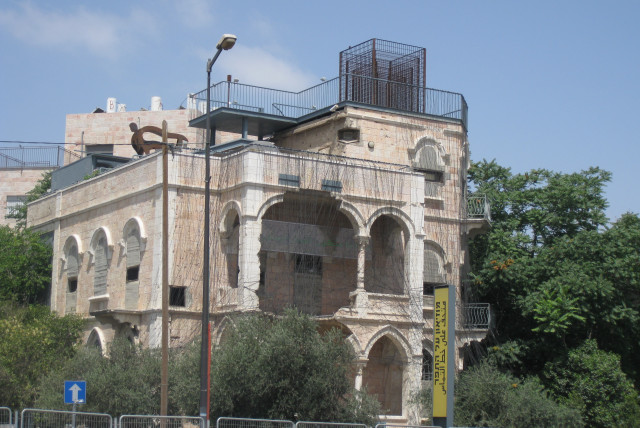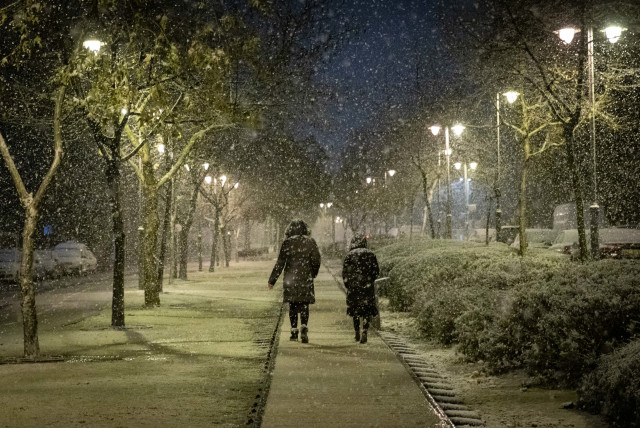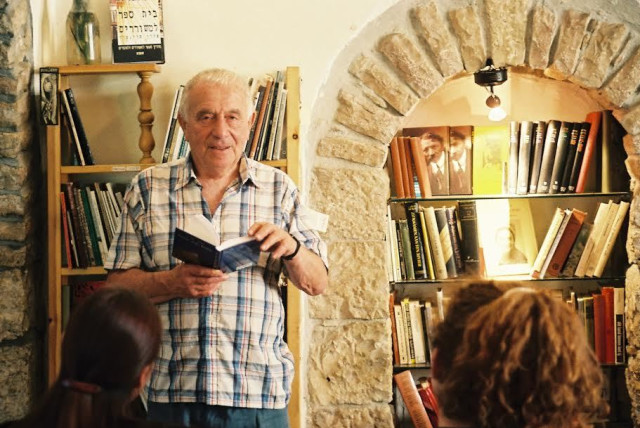Jerusalem Day: 10 iconic must-see spots in Israel's capital

In advance of Jerusalem Day, marking 56 years since the city’s unification, the Magazine brings you a tapestry of 10 of Jerusalem’s iconic places and people, in alphabetical order.
Jerusalem is not only the eternal capital of Israel and the Jewish people, but it is also a center of three religions, with the hearts of millions focused on it every day. In addition to its stones and sacred pillars, and political challenges, it’s a city that over the years has grown to about one million inhabitants.
In advance of Jerusalem Day, marking 56 years since the city’s unification, the Magazine brings you a tapestry of 10 of Jerusalem’s iconic places and people, in alphabetical order.
BAB AL-YEMEN
Jerusalem was the place where the notion that an alternative kashrut certification, outside the purview of the Rabbinate, took hold. The private kashrut revolution, led a decade ago by Rabbi Aharon Leibovitz, was based on mutual trust between the restaurateur and the customer. It bypassed the Rabbinate’s kashrut certification, which had been accused of being cumbersome and corrupt.
Yonatan Vadai took the matter further when he opened Bab al-Yemen, a kosher bar and restaurant which was open on Shabbat. The Rabbinate took the matter to court, and the case even reached the High Court of Justice. Nevertheless, the Rabbinate refused to issue him a kosher certificate, even though Bab al-Yemen operates exactly like kosher hotels.
But Jerusalemites voted with their feet and have filled the establishment every Shabbat.
BEIT TURGEMAN – MUSEUM ON THE SEAM
In 1932, architect Anton Barmachi built a distinguished home in the Hassan Turgeman quarter of the Sheikh Jarrah neighborhood of Jerusalem. From 1948 until the 1967 Six Day War, the building – with its impressive portico and hexagonal tower – was right on the border between Israel and Jordan. It was taken over by the IDF and used as a fortified station, damaged over the years by bullets and shells. After the Six Day War, Barmachi tried to reclaim his house, but the Israeli authorities denied his request.
The building was renovated in 1981, and by 1999 it was named the Museum on the Seam, following a donation by Georg von Holzbrink’s family in Germany and the Jerusalem Foundation. Upon the initiative of the museum’s curator, Rafi Etgar, the cultural landmark transitioned from a historical museum to a socio-political institution housing contemporary art exhibitions that express political and social issues. Most of the art shows present perspectives on human rights, coexistence and the issue of violence.
CHORDS (CALATRAVA) BRIDGE
Spanish architect Santiago Calatrava was invited to Jerusalem by then-city engineer Uri Sheetrit and then-mayor Ehud Olmert, who challenged him to “do the most beautiful contemporary bridge.” The bridge was designed to add a modern visual element to the Jerusalem skyline at the entrance to the city and to support a light rail system that would ease the city’s traffic problems.
The bridge is a single 118 m.-high mast supporting the roadway via 66 steel cables, arranged in a parabolic shape which develops three-dimensionally in space, making it the tallest structure in Jerusalem when it was completed. The exterior of the bridge is made mostly of Jerusalem stone, with steel, glass and concrete detailing.
Dubbed “Jerusalem’s first shrine of modern design” by Time magazine, the bridge has become a tourist attraction. It resembles a tent in the desert; or a harp, with the cables as the strings, to symbolize King David’s harp, according to some observers. Others interpret the looming pylon as the bust of a long-necked bird, a human arm or an arrow caught in a bow.
The bridge’s dedication ceremony drew criticism, as young female dancers, subsequently dubbed the “Taliban troupe,” were compelled to wear long skirts and cover their hair after ultra-Orthodox Jews threatened to disrupt the ceremony.
DAMASCUS GATE
This ancient gate was built by the Romans to connect the Cardo road with Naplouse (Nablus), then the main north-south route. It was integrated into the wall that was built around the city at the end of the third century.
In the square behind this gate stood a Roman victory column topped by a statue of the emperor Hadrian, hence the gate’s Arabic name, Bab el-Amud (“gate of the column”).
A cultural icon in Palestinian literature and culture, it has become the site of ongoing violent confrontations between Palestinians and Israeli soldiers and police, mainly since 2016, with more than 15 attacks occurring at the gate.
In April 2021, due to violent clashes, the Israel Police closed the stairs of the plaza outside the gate, which had become a traditional Ramadan gathering spot for Palestinians, especially in the evenings. The barricades were removed after several days, but the gate itself, and the stairs leading to it, remain a volatile area.
HAMESILA PARK
This urban park – which stretches along the route of the old railroad tracks that pass through the neighborhoods of Baka, the German Colony, Makor Haim, the Katmonim, Beit Safafa, Talpiot and Malha – was the initiative of a stubborn and unprecedented struggle by local residents.
Initially, the residents had organized to oppose plans to create a four-lane highway. Joining them was Nir Barkat, then mayor, who endorsed the establishment of a park along the old railway track. Today, Hamesila Park serves Jewish and Arab residents who go there from all parts of the city.
The park, which stretches for 5 km., is also an ideal bicycle route.
HANSEN HOUSE – THE LEPERS OF JERUSALEM
In the 19th century, the local population, which was under the rule of the Ottoman Empire, began to receive modern medical treatment in institutions established by various European bodies. This included the first leper asylum, founded in 1867 by the Joint Anglican-German Protestant community in Jerusalem.
Later, the asylum came under the administration of Israel’s Health Ministry and was renamed The Hansen Government Hospital. The medical administration, which was transferred to the dermatology department at Hadassah-University Medical Center, serviced patients until 2000.
In 2009, the exhibition Beyond the Wall documented the history of the leper asylum. On Jerusalem Day of that year, the government decided to transfer the complex to the municipality, with the mandate to turn it into a public cultural center, with the Jerusalem Development Authority overseeing the project. Today, Hansen House is a major center for design, media and technology.
MAHANEH YEHUDA
The Mahaneh Yehuda market was developed during the Ottoman period by local farmers who brought produce to sell. Over time, it became an organized market, where various items were sold, such as clothes, housewares, flowers, artwork, accessories, a variety of fresh and specialty food, sweets, baked goods, meat, fish, eggs, produce, spices and dairy products.
Following an extensive face-lift to repair the damage caused by repeated terrorist bombings in the early 2000s, the market became a popular venue for Jerusalem nightlife, replete with restaurants, bars and music clubs.
During the British Mandate Period (1917-1948), the first governor of Jerusalem, Ronald Stores, wanted to encourage Jerusalemites to support themselves financially. He appointed a city planner to create a formal design for the market, including needed infrastructure, such as proper sewage and garbage disposal, lighting and running water.
Today, the marekt encompasses a large area, from Jaffa Street to Agrippas Street. Over time, there have been many projects and initiatives to benefit the market. It is now overseen by the Mahaneh Yehuda Management, with representation from appointed merchants.
PINATI
The Meir family, owners of the Pinati (“Corner”) restaurant in the city center, had hoped that the small, four-table restaurant would provide a living for their children. Their ambitions were modest, like the plate of pickles and onion slices they serve with their hummus.
The first politician to inaugurate the Pinati “Wall of Fame” was prime minister Menachem Begin, who was the first to be photographed in 1975 by Micha Meir. Soon, a flock of politicians and celebrities followed, and pictures of them adorned the restaurant’s walls.
But during the coronavirus, Meir decided to take down the photos to protest against politicians who he felt let the people down during the pandemic. In their place are pictures of the regular diners, in recognition of their loyalty. The exception is Begin, who remains on the wall, in all his glory. Politicians may not be hailed anymore, but Pinati’s hummus and kubeh are still considered a “must” on every visit to the city center.
TMOL SHILSHOM
“In Jerusalem, there is one holy place on which no blood has to be shed – it is Tmol Shilshom,” said author and Jerusalem native Amos Oz on his first visit to one of the most iconic coffee houses in the city center.
Tmol Shilshom, which operates as a cafe and second-hand bookstore, has gained mythological status, attracting Jerusalemites and tourists, students and intellectuals, families and couples, religious and secular. A haven for avant-garde artists and writers, the cafe – which hosts book launches, evenings for poets and writers, and musical events – is also a favorite venue for dates and romantic meetings.
It was founded in 1994 by David Ehrlich, author of three short story collections: Blue 18; Tuesday and Thursday Mornings; and Who Will Die Last: Stories of Life in Israel. Ehrlich died in 2020, and his legacy continues through his associate Dan Goldberg.
WESTERN WALL – TEMPLE MOUNT – HARAM AL-SHARIF
Inside the one square kilometer of the Old City, often referred to as a “nuclear site” – or Axis Mundi (direct axis to heaven) – stand the Western Wall and Haram al-Sharif (the Muslims’ term for the Temple Mount). The Western Wall is a portion of the larger retaining wall of the Temple Mount, dating from the end of the Second Temple period, built by Herod the Great.
Because of the Temple Mount’s religious entry restrictions, the Western Wall is the holiest place where Jews are permitted to pray, since the presumed site of the Holy of Holies lies just behind it. In Muslim tradition, it constitutes the western border of Haram al-Sharif and the Aqsa Mosque area.
During Christian Roman rule, Jews were barred from Jerusalem except on Tisha Be’av, the day of national mourning for the two Temples. The Western Wall is 488 m.-long; part is concealed behind structures in the Muslim Quarter, with the exception of an eight-meter section called the “Little Western Wall,” which is presumed to be the closest to the Holy of Holies.
With the rise of the Zionist movement in the early 20th century, the Western Wall became a source of friction between the Jewish and Muslim communities, with frequent outbreaks of violence. A particularly deadly riot occurred in 1929, in which 133 Jews and 116 Arabs were killed, and many more wounded.
After the 1948 War of Independence, that part of Jerusalem was occupied by Jordan, and Jews were expelled from the Old City for 19 years, until June 10, 1967. Three days after establishing control over the Western Wall site, the Moroccan Quarter was bulldozed by Israeli authorities to create space for what is now the Western Wall Plaza.
The Temple Mount, known in Hebrew as Har Habayit, is the third-most important religious site for Muslims. At the center of the Dome of the Rock is a large rock, which according to Jewish and Muslim traditions, Abraham was prepared to sacrifice his son Isaac/Ishmael.
Jerusalem Post Store
`; document.getElementById("linkPremium").innerHTML = cont; var divWithLink = document.getElementById("premium-link"); if (divWithLink !== null && divWithLink !== 'undefined') { divWithLink.style.border = "solid 1px #cb0f3e"; divWithLink.style.textAlign = "center"; divWithLink.style.marginBottom = "15px"; divWithLink.style.marginTop = "15px"; divWithLink.style.width = "100%"; divWithLink.style.backgroundColor = "#122952"; divWithLink.style.color = "#ffffff"; divWithLink.style.lineHeight = "1.5"; } } (function (v, i) { });



